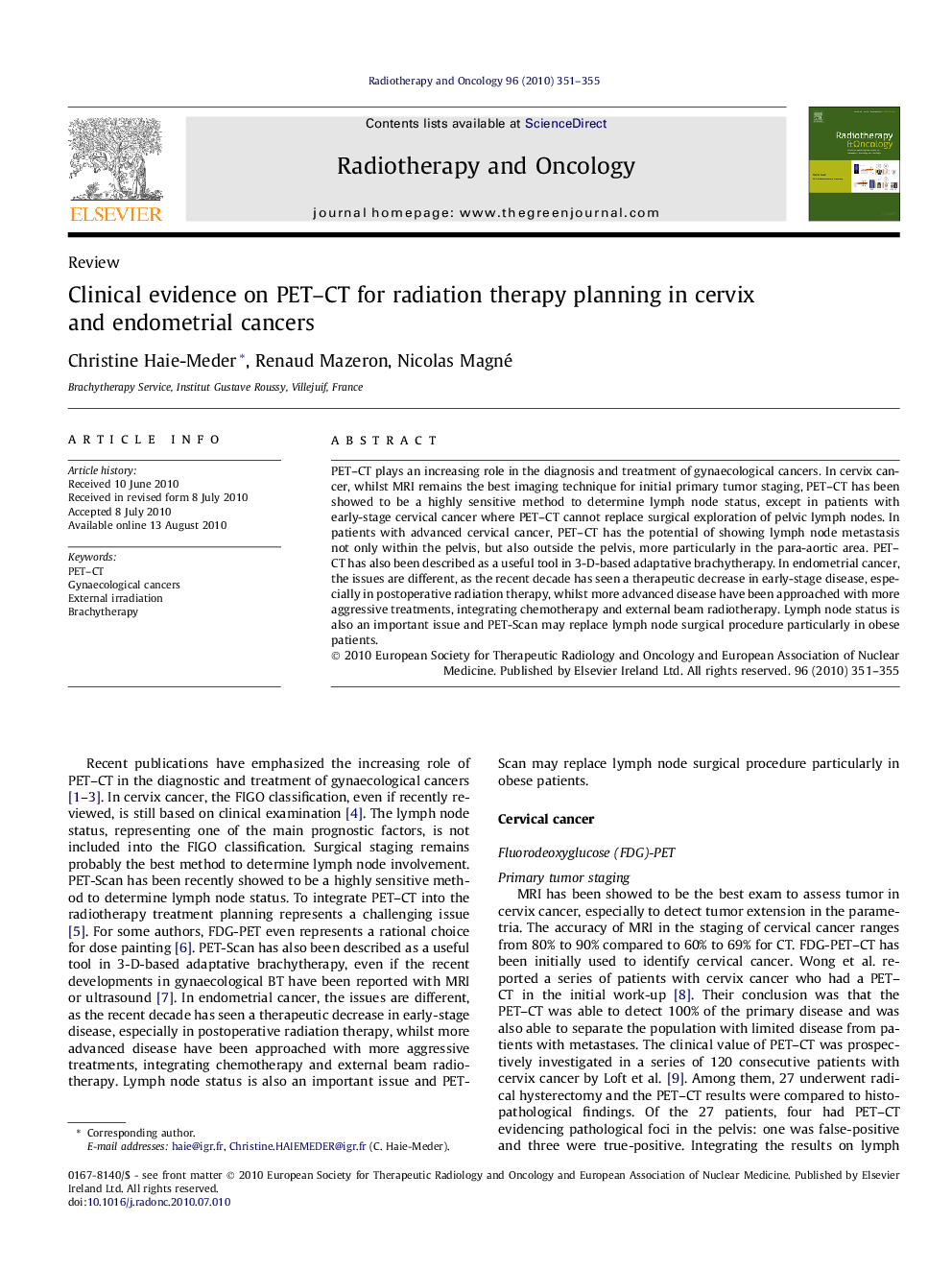| Article ID | Journal | Published Year | Pages | File Type |
|---|---|---|---|---|
| 2159388 | Radiotherapy and Oncology | 2010 | 5 Pages |
PET–CT plays an increasing role in the diagnosis and treatment of gynaecological cancers. In cervix cancer, whilst MRI remains the best imaging technique for initial primary tumor staging, PET–CT has been showed to be a highly sensitive method to determine lymph node status, except in patients with early-stage cervical cancer where PET–CT cannot replace surgical exploration of pelvic lymph nodes. In patients with advanced cervical cancer, PET–CT has the potential of showing lymph node metastasis not only within the pelvis, but also outside the pelvis, more particularly in the para-aortic area. PET–CT has also been described as a useful tool in 3-D-based adaptative brachytherapy. In endometrial cancer, the issues are different, as the recent decade has seen a therapeutic decrease in early-stage disease, especially in postoperative radiation therapy, whilst more advanced disease have been approached with more aggressive treatments, integrating chemotherapy and external beam radiotherapy. Lymph node status is also an important issue and PET-Scan may replace lymph node surgical procedure particularly in obese patients.
